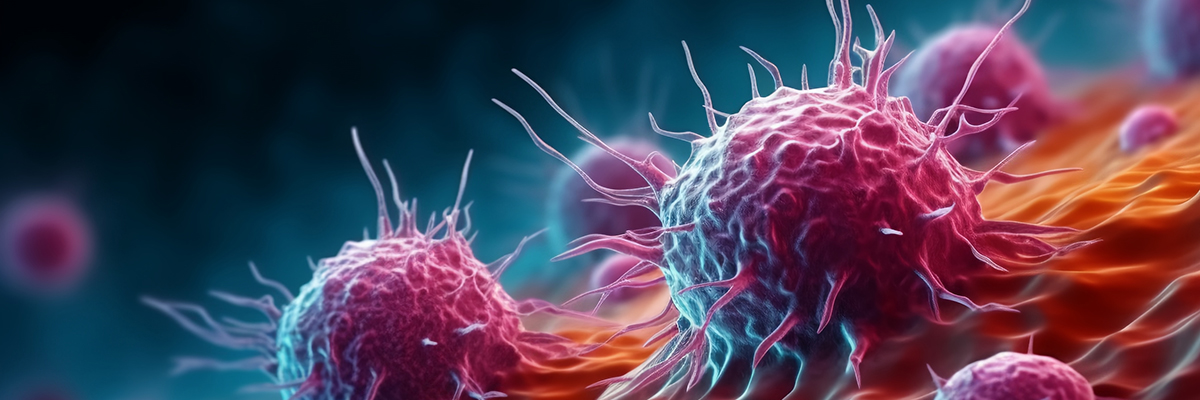With the continuous development of medicine and biology, the study of tumor microenvironment has become a hot topic in the field of oncology. The tumor microenvironment refers to the local environment where tumor cells are located, including surrounding cells, matrix, blood vessels, and their internal molecular signals. The tumor microenvironment is not only related to the occurrence, growth, and metastasis of tumors, but also closely related to the interaction between tumor cells and surrounding tissues. It involves multiple levels of organizational structure, function, metabolism, and intracellular environment, providing us with a new perspective to deeply understand the essence of tumors.
1. Definition and composition of tumor microenvironment
The tumor microenvironment, also known as TME, refers to the internal and external environment in which tumor cells are located, covering various cells, molecules, and signaling pathways of the tissue where the tumor is located. These factors are intertwined and together affect the growth, invasion, and metastasis of tumors. Specifically, the tumor microenvironment includes various components, such as tumor cells, tumor associated fibroblasts, infiltrating immune cells, stromal cells, extracellular matrix, and other secretory molecules. The interactions between these components form a complex network that plays a crucial regulatory role in the development of tumors.
2. Tumor microenvironment and tumor growth
Tumor cells alter and maintain their own survival and developmental conditions through autocrine and paracrine pathways. They can secrete various growth factors, chemokines, and cytokines to regulate the behavior of surrounding cells, thereby promoting tumor growth and spread. Meanwhile, tumor cells can also create favorable conditions for their migration and invasion by altering the composition and structure of the extracellular matrix.
3. Tumor microenvironment and immune response
The immune cells in the tumor microenvironment play an important role in regulating tumor immune responses. On the one hand, some immune cells can recognize and attack tumor cells, thereby inhibiting tumor growth; On the other hand, tumor cells can also evade immune system attacks by secreting immunosuppressive factors or altering the function of immune cells. The interaction between tumor cells and immune cells determines the immune status of the tumor microenvironment, which in turn affects the development and prognosis of tumors.

4. Tumor microenvironment and immunotherapy
In recent years, immunotherapy has shown great potential in tumor treatment. Immunotherapy can specifically attack tumor cells and achieve therapeutic goals by activating or enhancing the patient's own immune system. However, the effectiveness of immunotherapy is often influenced by the tumor microenvironment. Optimizing the tumor microenvironment, such as increasing the infiltration of immune cells in tumor tissue and reducing the expression of immunosuppressive factors, is expected to improve the effectiveness of immunotherapy.
5. Tumor microenvironment and tumor metastasis
Tumor metastasis is one of the main causes of death in malignant tumors. Tumor cells migrate to distant tissues and organs through blood or lymphatic fluid, forming new tumor lesions. The tumor microenvironment plays a crucial role in the process of tumor metastasis. On the one hand, the tumor microenvironment can provide necessary conditions for the migration of tumor cells, such as degradation of extracellular matrix, angiogenesis, etc; On the other hand, the tumor microenvironment can also affect the survival and proliferation of tumor cells by regulating immune and inflammatory responses.
6. Research progress and prospects of tumor microenvironment
With the continuous progress in fields such as oncology, molecular biology, and immunology, our understanding of the tumor microenvironment is also deepening. An increasing number of studies indicate that the tumor microenvironment not only affects the occurrence and development of tumors, but is also closely related to the treatment and prognosis of tumors. In the future, we can provide new ideas and methods for the diagnosis, treatment, and prevention of tumors by conducting in-depth research on the composition, function, and regulatory mechanisms of the tumor microenvironment. At the same time, we also need to pay attention to individual differences and dynamic changes in the tumor microenvironment. There may be significant differences in the tumor microenvironment between different types of tumors and patients. Therefore, in tumor treatment, we need to develop personalized treatment plans based on the specific situation of patients to achieve the best treatment effect.
The tumor microenvironment is a complex and variable system that involves multiple levels of interaction and regulation. By studying the tumor microenvironment, we can gain a deeper understanding of the nature and developmental patterns of tumors, providing new strategies and means for the treatment and prevention of tumors. In future research, we need to further deepen our understanding of the tumor microenvironment, explore its mechanisms of action in tumor occurrence, development, and treatment, and make greater contributions to the progress of oncology.
In summary, the tumor microenvironment is a key and core issue in modern tumor biology. It not only provides us with a new perspective to gain a deeper understanding of tumors, but also offers new ideas and methods for the treatment and prevention of tumors. With the launch of the Beacon device by Redbert (Beijing) Biotechnology Co., Ltd., it can save you a lot of screening time and greatly reduce production costs. The Beacon Optofluidic System can directly operate and cultivate a single target cell from the beginning of the experiment, and the results are reliable and highly efficient. This system combines unique optoelectronic positioning technology with novel nanofluidic design, which can automatically perform experimental operations such as import, culture, detection, and export on single cells or clones, providing an integrated and efficient research platform for all single-cell based development and applications. We have reason to believe that in future research, we look forward to more discoveries and breakthroughs in the tumor microenvironment, making greater contributions to human health.
* The above content is collected online for reference only. If the article on this website involves copyright or other issues, please contact us in a timely manner and we will handle it as soon as possible!